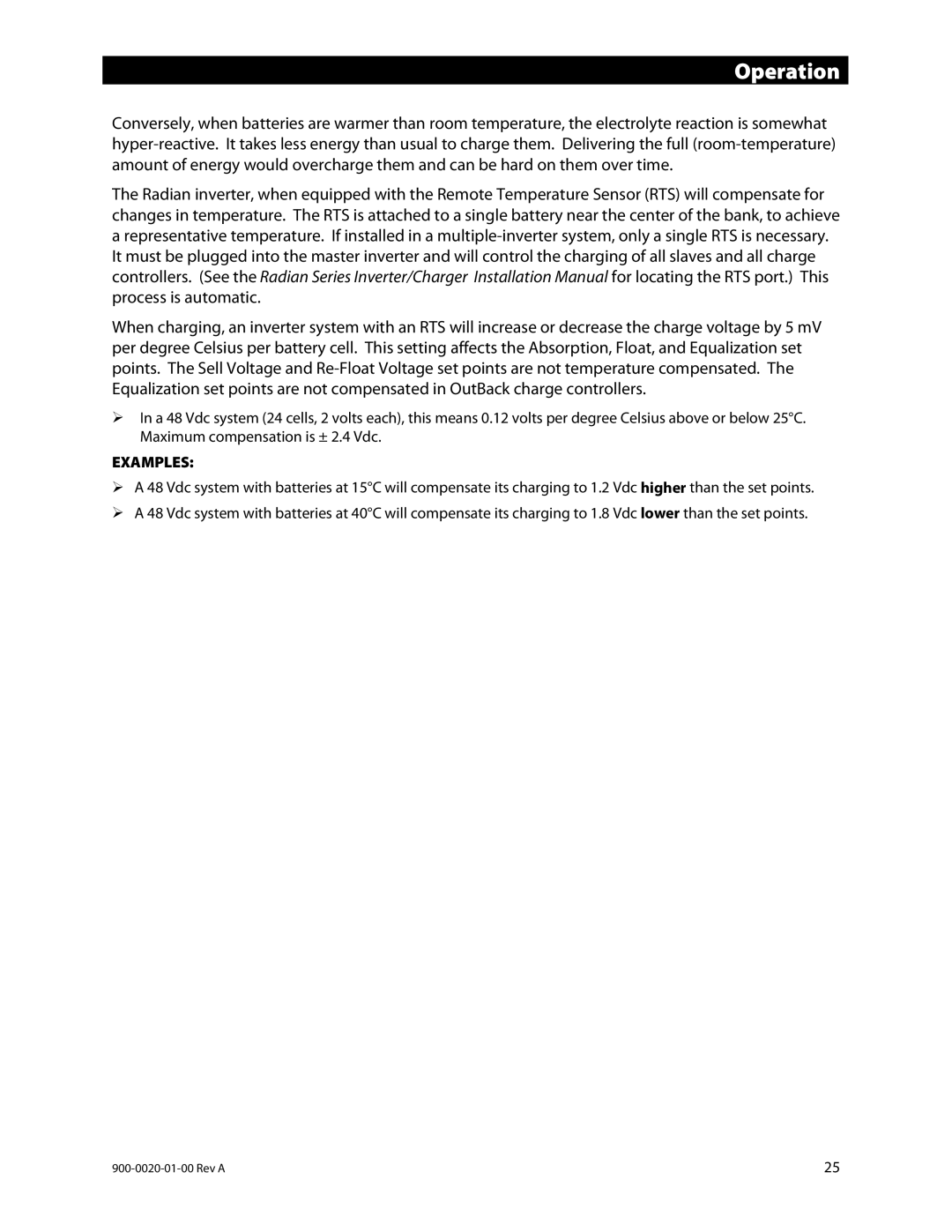Operation
Conversely, when batteries are warmer than room temperature, the electrolyte reaction is somewhat
The Radian inverter, when equipped with the Remote Temperature Sensor (RTS) will compensate for changes in temperature. The RTS is attached to a single battery near the center of the bank, to achieve a representative temperature. If installed in a
When charging, an inverter system with an RTS will increase or decrease the charge voltage by 5 mV per degree Celsius per battery cell. This setting affects the Absorption, Float, and Equalization set points. The Sell Voltage and
In a 48 Vdc system (24 cells, 2 volts each), this means 0.12 volts per degree Celsius above or below 25°C. Maximum compensation is ± 2.4 Vdc.
EXAMPLES:
A 48 Vdc system with batteries at 15°C will compensate its charging to 1.2 Vdc higher than the set points.
A 48 Vdc system with batteries at 40°C will compensate its charging to 1.8 Vdc lower than the set points.
25 |
